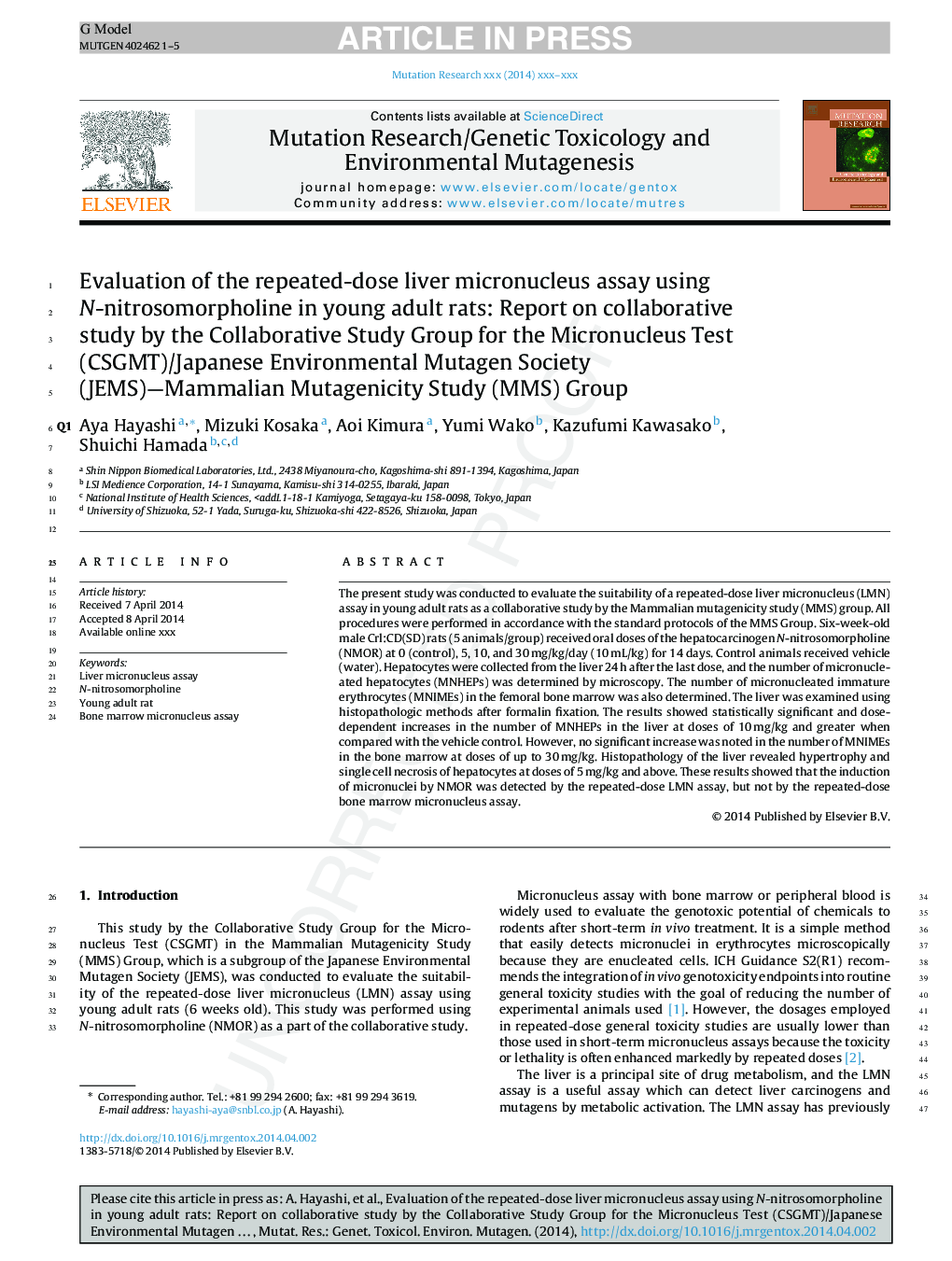| Article ID | Journal | Published Year | Pages | File Type |
|---|---|---|---|---|
| 8456415 | Mutation Research/Genetic Toxicology and Environmental Mutagenesis | 2015 | 5 Pages |
Abstract
The present study was conducted to evaluate the suitability of a repeated-dose liver micronucleus (LMN) assay in young adult rats as a collaborative study by the Mammalian mutagenicity study (MMS) group. All procedures were performed in accordance with the standard protocols of the MMS Group. Six-week-old male Crl:CD(SD) rats (5 animals/group) received oral doses of the hepatocarcinogen N-nitrosomorpholine (NMOR) at 0 (control), 5, 10, and 30Â mg/kg/day (10Â mL/kg) for 14 days. Control animals received vehicle (water). Hepatocytes were collected from the liver 24Â h after the last dose, and the number of micronucleated hepatocytes (MNHEPs) was determined by microscopy. The number of micronucleated immature erythrocytes (MNIMEs) in the femoral bone marrow was also determined. The liver was examined using histopathologic methods after formalin fixation. The results showed statistically significant and dose-dependent increases in the number of MNHEPs in the liver at doses of 10Â mg/kg and greater when compared with the vehicle control. However, no significant increase was noted in the number of MNIMEs in the bone marrow at doses of up to 30Â mg/kg. Histopathology of the liver revealed hypertrophy and single cell necrosis of hepatocytes at doses of 5Â mg/kg and above. These results showed that the induction of micronuclei by NMOR was detected by the repeated-dose LMN assay, but not by the repeated-dose bone marrow micronucleus assay.
Related Topics
Life Sciences
Biochemistry, Genetics and Molecular Biology
Cancer Research
Authors
Aya Hayashi, Mizuki Kosaka, Aoi Kimura, Yumi Wako, Kazufumi Kawasako, Shuichi Hamada,
